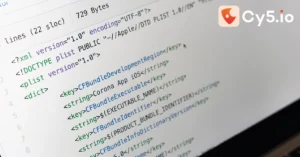70% of cloud breaches stem from unpatched vulnerabilities. Here’s how to fix it.
In today’s hyper-connected cloud environments, vulnerability management is no longer a reactive IT function—it’s a strategic imperative. With cloud-native architectures, ephemeral workloads, and complex integrations, traditional vulnerability management (VM) tools fall short. That’s where CNAPP (Cloud-Native Application Protection Platform)—a unified approach to securing cloud-native applications across their lifecycle comes in handy.
This blog explores how vulnerability management in cloud security has evolved in 2025, why CNAPP is central to modern cloud defense, and how DevOps engineers, CISOs, and cloud architects can implement best practices to reduce risk across AWS, Azure, and GCP.
What Is Vulnerability Management in Cloud Security?
Vulnerability management refers to the continuous process of identifying, evaluating, prioritizing, and remediating security weaknesses in cloud environments. Unlike traditional VM, which focuses on static infrastructure, cloud-native vulnerability management addresses dynamic, distributed systems.
Traditional vs Cloud-Native Vulnerability Management
| Features | Traditional VM | Cloud-Native VM |
| Scope | On-prem servers, endpoints | Containers, serverless, IaC |
| Tools | Nessus, Qualys | CNAPP, CSPM, CWPP |
| Frequency | Periodic scans | Continuous monitoring |
| Integration | Manual patching | Automated CI/CD pipelines |
Key Cloud-Native Tools
- CNAPP: Combines CSPM, CWPP, CIEM, and IaC scanning into one platform.
- CSPM (Cloud Security Posture Management): Detects misconfigurations.
- CWPP (Cloud Workload Protection Platform): Secures workloads at runtime.
- CIEM (Cloud Infrastructure Entitlement Management): Manages identity risks.
Why Cloud-Native Vulnerability Management Matters in 2025
Cloud Breach Statistics
According to CrowdStrike’s 2025 Global Threat Report, 79% of detections were malware-free, and some breaches occurred within 51 seconds. McKinsey highlights that identity seams and misconfigured integrations are the top cloud risks.
Shared Responsibility Model Gaps
Cloud providers secure the infrastructure, but customers must secure:
- Applications
- Data
- Identity configuration
- Third-party integrations
This gap often leads to unpatched vulnerabilities, especially in multi-cloud setups.

How Cloud-Native Vulnerability Management Works
Cloud-native vulnerability management is a continuous, automated lifecycle that adapts to the dynamic nature of cloud environments.
Lifecycle Breakdown
Asset Discovery
- Identify cloud resources (VMs, containers, serverless functions) using CNAPP inventory modules.
- Tag assets by environment (prod, staging) and criticality.
Vulnerability Detection
- Scan containers, IaC, and APIs using CNAPP-integrated scanners.
- Use threat intelligence feeds to enrich findings with exploitability data.
Prioritization
- Apply CVSS v3.1 scores, exploit maturity, and business impact.
- Use risk-based prioritization to avoid alert fatigue.
Remediation
- Trigger automated patching via CI/CD pipelines.
- Use ticketing integrations (e.g., Jira, ServiceNow) for manual workflows.
Validation
- Re-scan post-remediation to confirm fixes.
- Generate compliance reports for audits (e.g., ISO 27001, SOC 2).
AI & ML Enhancements
- CNAPPs now use machine learning to correlate vulnerabilities with attack paths.
- Predictive analytics help forecast which vulnerabilities are likely to be exploited.
How CNAPP Solutions Reduce Attack Surfaces
CNAPPs are designed to reduce the cloud attack surface by offering unified visibility and control across the application lifecycle.
Key Attack Surface Reduction Strategies
1. Unified Visibility
- CNAPPs consolidate data from CSPM, CWPP, CIEM, and IaC scanners.
- Security teams get a single pane of glass across multi-cloud environments.
2. Contextual Risk Scoring
- CNAPPs correlate vulnerabilities with asset exposure, identity access, and runtime behavior.
- Example: A container with a CVE is deprioritized if it’s isolated and non-internet-facing.
3. Runtime Protection
- Detects anomalous behavior like crypto-mining or reverse shells.
- Uses eBPF-based sensors for low-overhead monitoring.
4. IaC Misconfiguration Prevention
- Scans Terraform, CloudFormation, and Helm charts before deployment.
- Prevents insecure defaults like open S3 buckets or overly permissive IAM roles.
5. Identity Risk Management
- CIEM modules detect unused privileges, toxic combinations, and privilege escalations.
- Enforces least privilege and monitors federated identity flows.
Cloud Security Best Practices for 2025
In 2025, cloud security is not just about firewalls and access controls—it’s about automated, intelligent, and continuous protection. Here are the most impactful practices:
1. Shift-Left Security in DevOps Pipelines
- Embed vulnerability scanning into CI/CD workflows using CNAPP integrations.
- Use IaC templates with built-in security policies (e.g., Terraform with Sentinel).
- Example: A GitHub Action that blocks deployments if critical CVEs are detected.
2. Zero-Trust Architecture for Cloud Workloads
- Implement micro segmentation to isolate workloads.
- Use identity-aware proxies and just-in-time access for privileged roles.
- Integrate with CIEM tools to monitor and restrict cloud entitlements.
3. SBOM-Driven Dependency Hygiene
- Generate SBOMs during build time using tools like Syft or CycloneDX.
- Validate SBOMs against known vulnerabilities using CNAPP integrations.
- Store SBOMs in artifact repositories (e.g., JFrog, GitHub Packages) for auditability.
4. Continuous Threat Detection and Response
- Use CNAPPs with runtime protection to detect lateral movement and privilege escalation.
- Integrate with SIEMs (e.g., Splunk, Sentinel) and SOAR platforms for automated response.
- Leverage MITRE ATT&CK mappings to prioritize remediation based on adversary behavior.
5. Multi-Cloud Governance
- Apply unified policies across AWS, Azure, and GCP using CNAPP dashboards.
- Monitor drift and misconfigurations with CSPM modules.
- Use policy-as-code to enforce compliance (e.g., Open Policy Agent).
Check Out More on Cloud Security Best Practices for 2025
Real-World Example: Fintech Client’s CNAPP Success
A global fintech firm, faced challenges with:
- Rapid cloud adoption across AWS and Azure
- Frequent IaC misconfigurations
- Limited visibility into runtime threats
Solution: Deploying Cy5 ion
Implementation Highlights:
- IaC Scanning: Integrated ion Cloud Security into Terraform pipelines to catch misconfigurations pre-deployment.
- Runtime Protection: Deployed agentless sensors to monitor EC2 and container workloads.
- SBOM Integration: Used ion to generate SBOMs and correlate with CVEs in third-party libraries.
Results:
| Metric | Before Cy5’s ion | After Cy5’s ion |
| Mean Time to Remediate (MTTR) | 12 days | 3 days |
| IaC Misconfigurations | 42/month | 5/month |
| Compliance Audit Failures | 3/year | 0/year |
| Cloud Risk Score | High | Low |
Lessons Learned
- Augmentation is key: Manual patching has been replaced with CI/CD-driven workflows.
- Context matters: Risk-based prioritization helps focus on exploitable vulnerabilities.
- Visibility drives action: Unified dashboards enable faster decision-making across teams.
Check Out Cy5’s ion Cloud Security Platform
Conclusion: Vulnerability Management
In 2025, vulnerability management is no longer optional—it’s foundational. With CNAPP platforms, SBOM integration, and automated patching, organizations can proactively reduce cloud risks and stay ahead of adversaries.

Outpace Cloud Threats: Cy5’s ion Platform Delivers Security That Scales with You
In a landscape where cloud complexity outpaces security teams, Cy5’s ion platform redefines defense—combining autonomous threat detection, real-time posture control, and patented attack simulation to stop breaches before they escalate. Unlike reactive tools that drown you in alerts, ion learns your environment, prioritizes risks, and automates remediation, cutting mean-time-to-response by 80%. The result? Security that’s not just stronger, but smarter—proving ROI isn’t about spending more, but wasting less. Ready to see how ion turns cloud resilience into a competitive edge?
Follow Cy5 on LinkedIn and Subscribe Our Newsletter
FAQs: Cloud Vulnerability Management | Cy5
Vulnerability management in cloud security is the continuous process of identifying, prioritizing, and remediating weaknesses across cloud environments.
In 2025, cloud-native systems evolve too fast for manual patching — organizations must adopt automated CNAPP-based vulnerability management to detect risks in real time, integrate with CI/CD pipelines, and maintain compliance with NIS2, SOC 2, and ISO 27001.
A Cloud-Native Application Protection Platform (CNAPP) unifies CSPM, CWPP, and CIEM modules to detect vulnerabilities, misconfigurations, and identity risks across containers, serverless, and IaC.
CNAPP helps reduce Mean Time to Remediate (MTTR) by automating patching, correlating risk context, and prioritizing exploitable CVEs — providing a single pane of glass for multi-cloud posture visibility.
The modern VM lifecycle includes five stages:
Asset Discovery: Identify cloud assets across AWS, Azure, and GCP.
Detection: Continuous scanning using integrated CNAPP or CSPM tools.
Prioritization: Risk-based scoring (CVSS v3.1 + exploit likelihood).
Remediation: Automated patching and IaC correction.
Validation: Post-remediation scans and compliance reporting.
This lifecycle ensures real-time visibility and proactive defense.
Traditional VM tools like Nessus or Qualys focus on periodic scans of static infrastructure.
Cloud-native vulnerability management offers continuous, context-aware scanning of containers, microservices, and IaC templates within DevOps pipelines.
It shifts security left into CI/CD, integrates AI-based prioritization, and scales across ephemeral workloads.
“Shift-left” means embedding security earlier in DevOps pipelines.
Use IaC scanning, SBOM validation, and policy-as-code tools (like Terraform Sentinel or OPA) to block insecure deployments.
Integrate CNAPP scanners into GitHub Actions or Jenkins pipelines for continuous feedback.
–> Automate continuous scanning and patching.
–> Integrate AI-driven prioritization to cut alert fatigue.
–> Use SBOMs (Software Bill of Materials) for dependency hygiene.
–> Implement Zero Trust architecture for workload isolation.
–> Continuously validate posture through CNAPP dashboards.
–> These best practices align with NIS2 and CIS Benchmarks for 2025
AI and ML models help predict exploitability, correlate CVEs with runtime behavior, and reduce noise by flagging contextually critical vulnerabilities.
Modern CNAPPs use ML to forecast exploit chains and automate patch scheduling — improving response times by over 70%.
Common misconfigurations include:
1. Public S3 buckets or open storage containers
2. Over-permissive IAM roles
3. Disabled logging or encryption
4. Unrestricted network ports
5. Inconsistent patch levels
Addressing these reduces 70% of cloud breach risk Vulnerability Management in Cloud Security.
SBOMs provide component-level transparency in your software supply chain.
They allow security teams to trace open-source dependencies, correlate CVEs, and automate risk alerts during builds.
Integrating SBOM generation into CNAPP or CI/CD pipelines ensures faster detection of third-party vulnerabilities.





